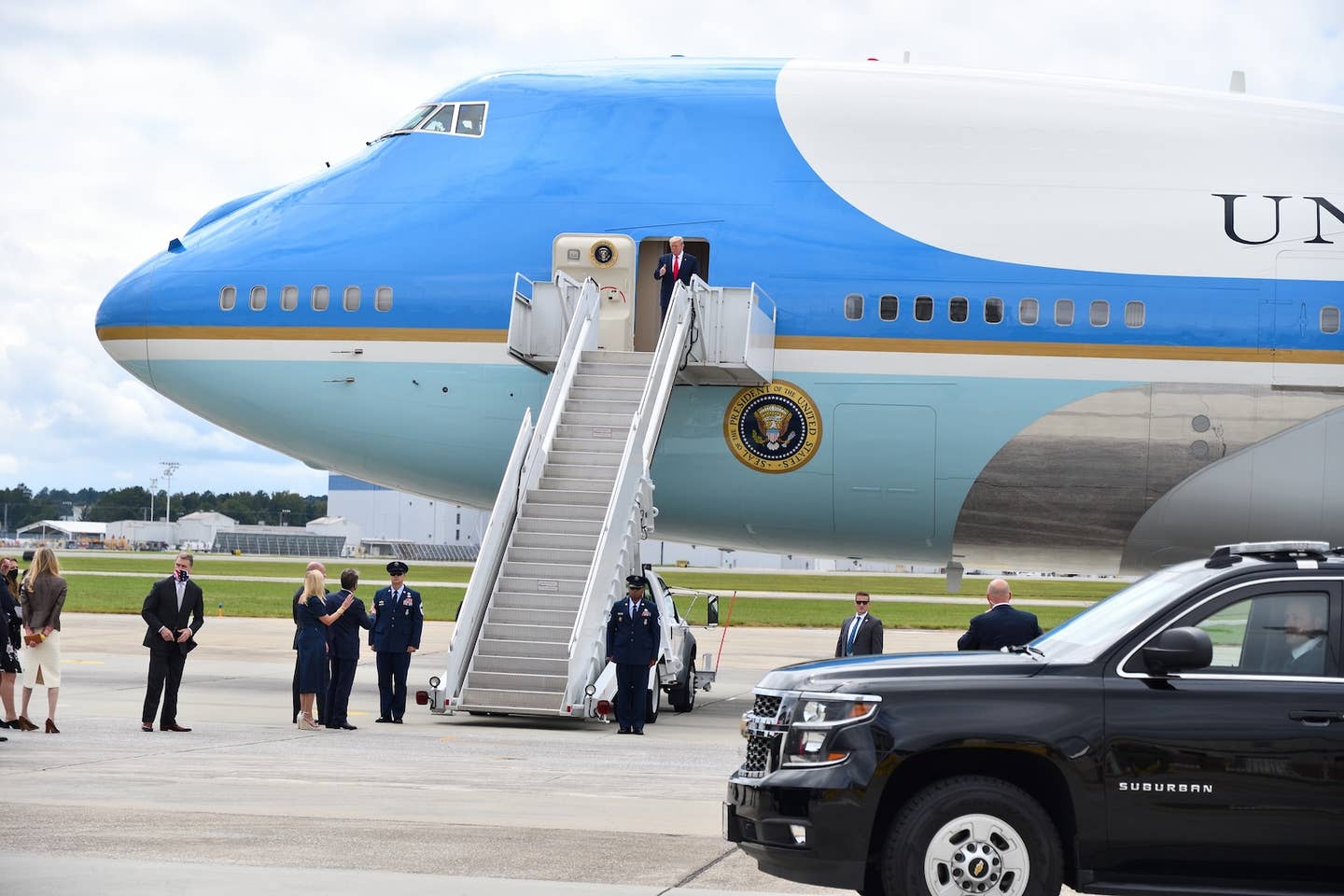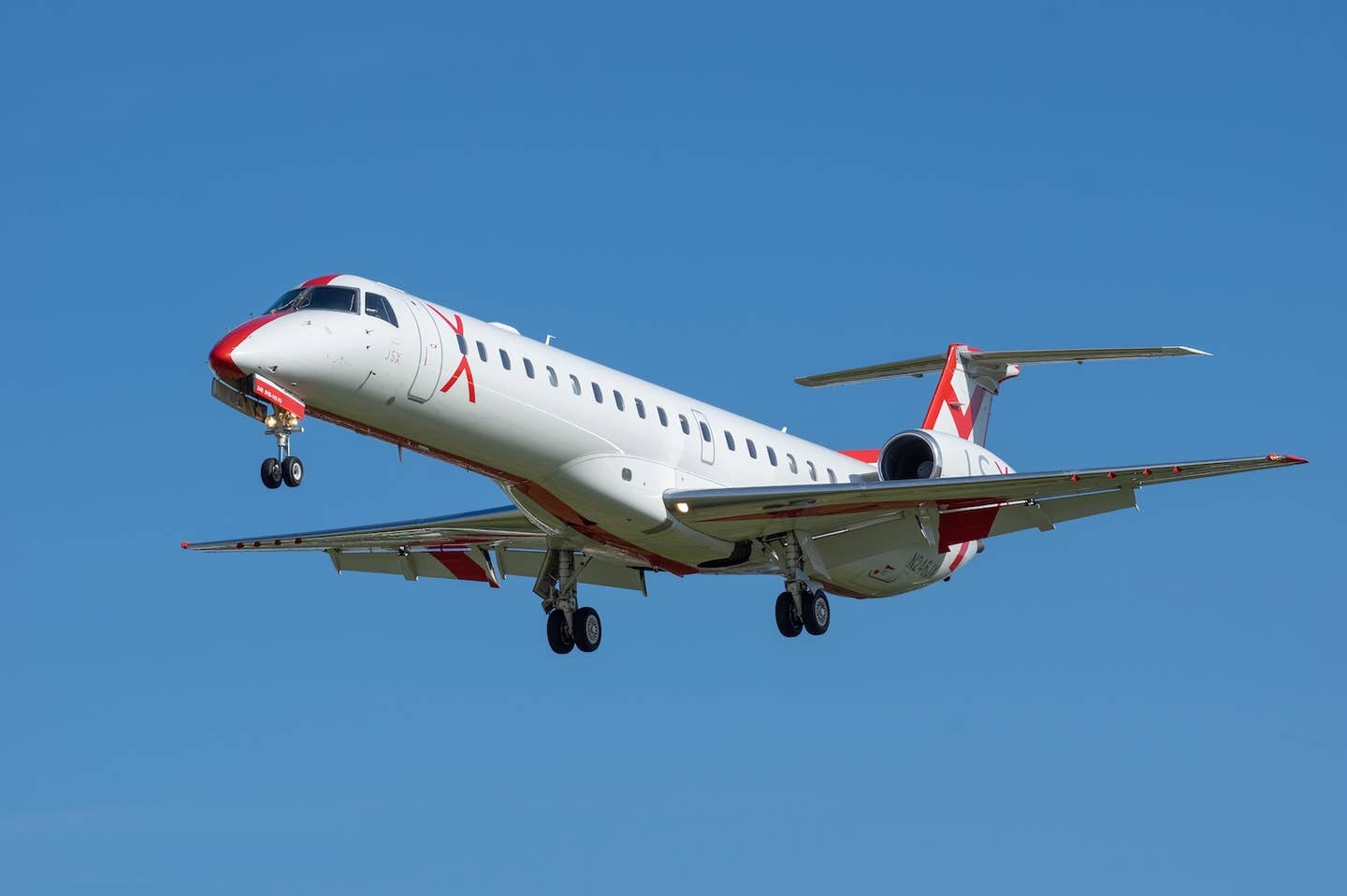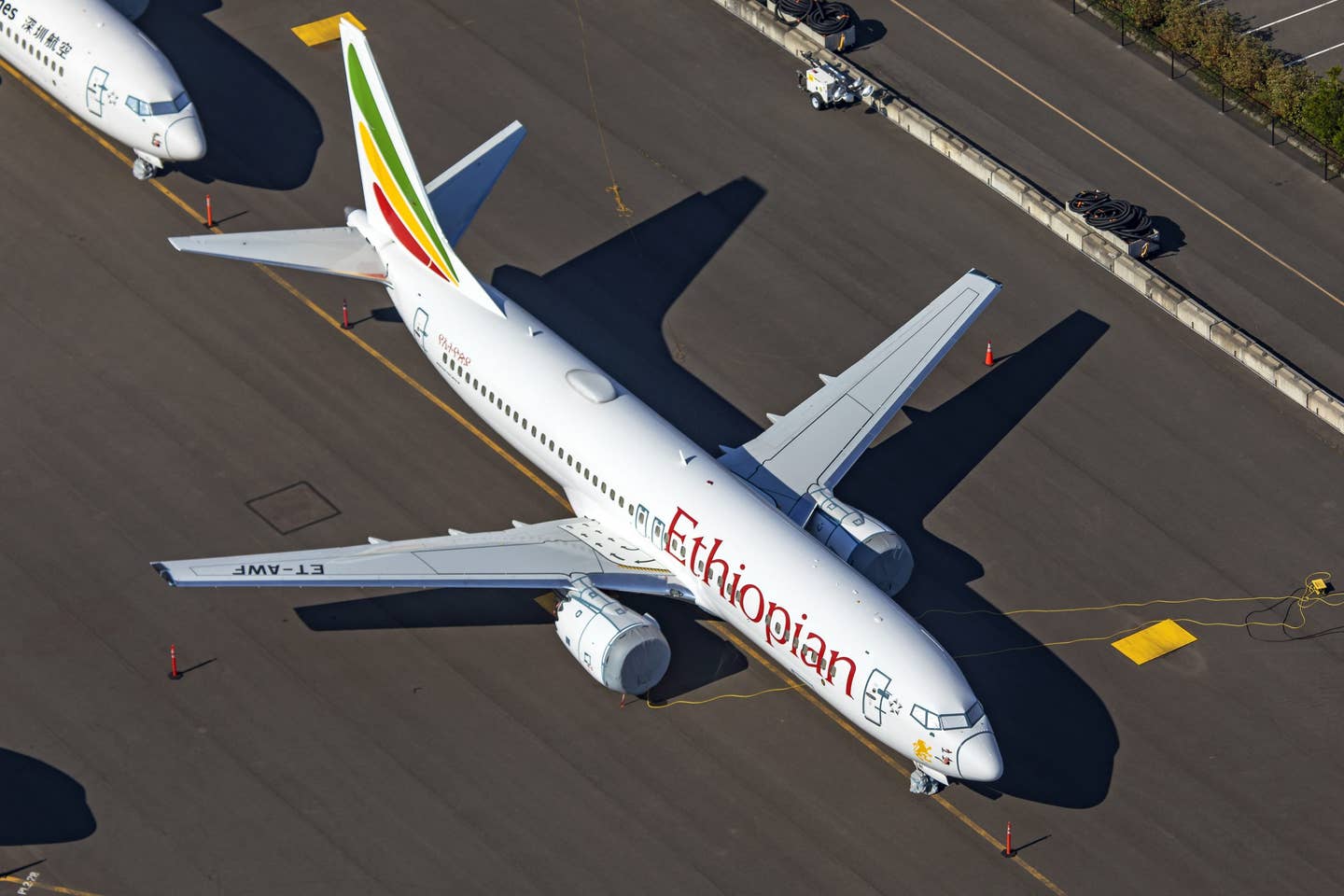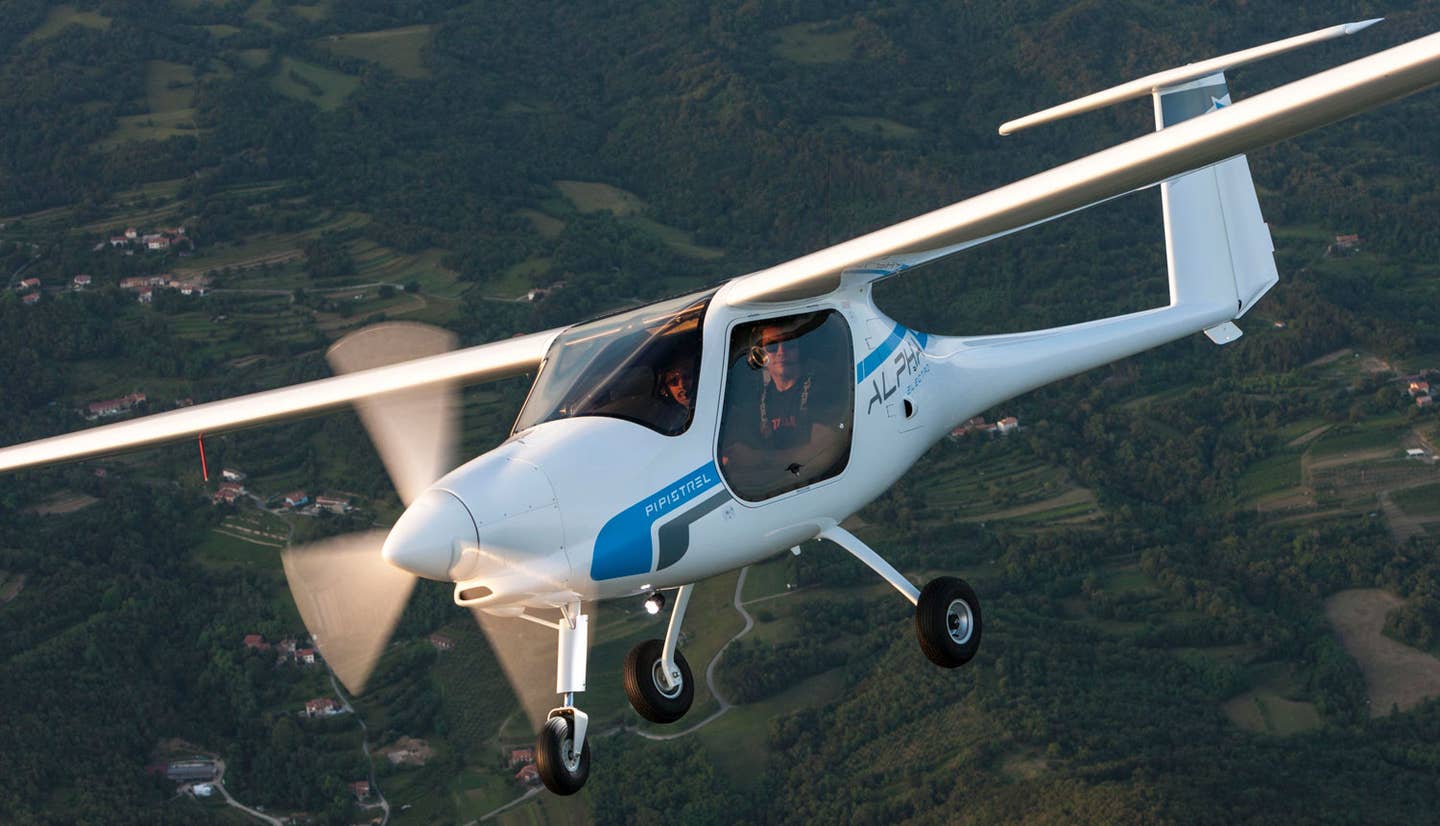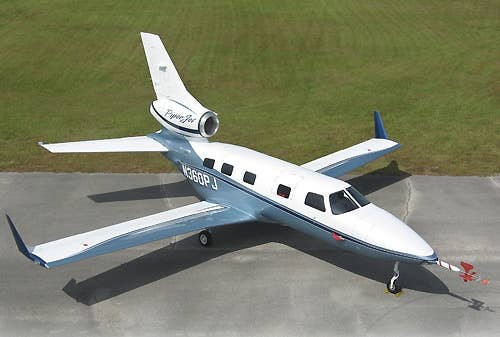
PiperJet
In September Piper had an open house at its Vero Beach factory for customers, dealers, prospects and members of the press, to show off and discuss its emerging PiperJet turbofan single. There was no milestone or big update to prompt the event. It was just a way for Piper to get folks down to Florida to look at the airplane in flight and discuss the progress of the program. Piper missed getting the jet to Oshkosh for AirVenture by a matter of weeks -- it made its first flight during the show.
The Vero event was worth the fuss and expense for Piper. In two days of customer get-togethers, it sold five of the $2.5 million jets, along with a couple of Meridian turboprop singles, the turboprops to customers who want to get some turbine time while waiting for their jet.
As you can see from the photographs, the PiperJet was looking pretty -- it had emerged from the paint shop only days before. And like most new-design jets from first-time jet makers, the first PiperJet will be doing double duty as a show horse and a test airplane. Piper planned to take it to a PA-46 owners convention in Dallas shortly after the Vero gathering, and the company had a high-visibility spot reserved for it at the NBAA Convention in Orlando in October.
By the end of the Vero event Piper had a total of 203 orders for the airplane, more than 50 of those from retail customers, meaning that around 150 of those orders were from dealers. Based on the enthusiasm for the airplane, Piper says that it's confident that those dealers will begin to quickly convert their deliveries into retail orders.
It will be a while before customers start getting their PiperJets, however, and the schedule has slipped by about a year. Certification is now planned for late 2011 or early 2012, with deliveries to follow shortly thereafter. Piper chief engineer John Becker explained that one of the big reasons for the delay is that the company wanted to get everything right, so its early design work, including wind tunnel and computer model testing, had simply taken longer than anticipated. Piper president Jim Bass went a bit further, saying that a modest-sized company like Piper can't afford to get it wrong.
When asked by a reporter if the company was worried about the current financial uncertainty in the world of venture capitalism, Bass replied that anyone not concerned should "check for a pulse." He added that the company had been remarkably successful in coming up with funding for the project to date and that he anticipated that it would be able to continue to fund the project, especially given the strong sales picture so far.
By all appearances, the airplane is performing up to expectations. While it was still limited to 160 knots pending flutter testing, it had amassed 55 hours by the time of the event, and Piper planned to increase the frequency of the flight test program as new pilots were added to share the flying load.
Piper VP of sales and marketing Bob Kromer said that hitting performance numbers for the jet looks promising. He expects to see a 360-knot cruise at 77 gph resulting in about a 1,000 nm range. At 320 knots the fuel flow comes down to 64 gph and the range stretches out to 1,300 nm. Another important number, max operating speed, is pegged at 250 knots, which, Kromer says, will help the small jet to fit in easily with airliner traffic, and the powerful Williams engine will allow the PiperJet to climb at 200 knots with "very good rates of climb." Kromer said that the jet will be happy operating out of fields from 3,000 to 4,000 feet in length, and anti-lock brakes will be optional equipment.
A somewhat surprising but promising change is that Piper has decided not to use an automatic trim compensation system if it can at all avoid it, a move sure to save the program a lot of time, money and complications. Piper had assumed that the jet would need a trim compensation system due to the engine's high thrust line, which tends to push the nose down sharply when power is applied. This is most critical, for obvious reasons, with a go-around, when a dirty airplane gets a sudden dose of power when it's still close to the ground.
But flight testing has shown the system might not be necessary. When I asked Piper chief pilot Dave Schwartz about the high-thrust issue, he indicated that the effects could be handled by the pilot without automated assistance. Even during go-around, he said, the airplane was easy to control with reasonable application of back pressure on the side stick and with trimming off the pressure. Kromer did add that a trim compensation might be needed, based on the FAA's take on the subject, but for the time being they were happy with the airplane's handling without it.
In terms of control feel, Schwartz said that even though the airplane is pleasant enough to fly, engineers are working on creating a lighter and "more harmonious" feel. He pointed out that Piper had certified larger, heavier and more complex airplanes, specifically the Cheyenne 400, with cable and pulley systems, like the PiperJet's, that boasted nicely harmonized controls. The point, clearly, was that with a little extra work, the PiperJet could get to that point, as well. Piper will continue, said program manager Dennis Olcott, to explore alternatives, most likely a push tube control system, though he was confident that the cable system could be made to do the trick.
A couple of other systems will be changing over the next few months. The airplane will be getting trailing link landing and a deice system, boots with a heated engine inlet. Those are not expected to be complicated additions, though the addition of boots will surely cut down on speed and range a little, compared to the unequipped airplane.
Bass said that so far the program, which he estimates as being a quarter of the way done, has cost about $25 million. And he agreed, to extrapolate, that the end figure would be around $100 million, though he admitted that there are a lot of unknowns between here and certification. On an optimistic note, he did point out that one strength that Piper has is in certifying airplanes -- it has gotten approval for around 160 airplane models over the past 70-plus years. It is also expert, Kromer pointed out, in building airplanes. Like the Mustang jet for Cessna, the PiperJet will be built by Piper using the same essential fabrication techniques it uses to produce a couple of hundred airplanes a year now.
At one point Bass referred to the PiperJet, which will take around six years from conception to delivery, as being a kind of "new beginning" for Piper. I asked him if they were, thus, already looking at follow-on products? Bass answered somewhat cryptically and without elaborating that they were indeed looking at new products -- perhaps even lower-end products -- that would utilize PiperJet technology.
I'll let you speculate on what kind of airplane that might be. For the time being, Piper is going to be busy building PiperJets. It hopes to have three conforming airplanes in the flight test program within the next year.

Sign-up for newsletters & special offers!
Get the latest FLYING stories & special offers delivered directly to your inbox

